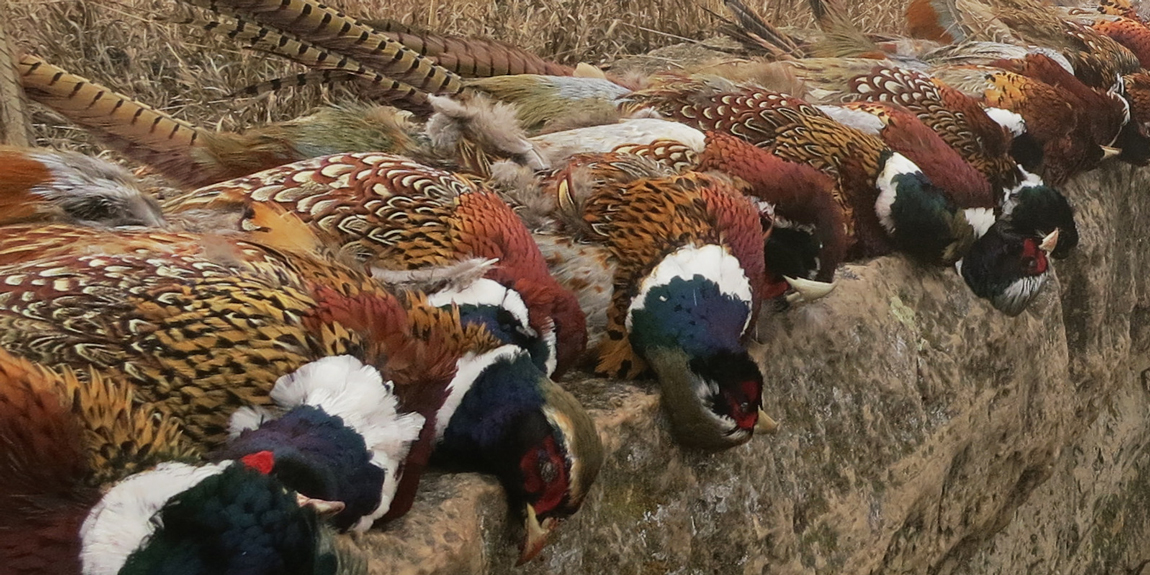It’s not every day or even every year that you can take a 15 bird limit of Whitewing Doves in slightly over one hour. No, that wasn’t in Old Mexico in the 70s or early 80s but just outside the city limits of San Antonio, Texas on September 1st thru 3rd, 2016. As is the case with many events, to fully appreciate the significance of my success we need to back up a few decades and explore the Whitewing Dove and the expansion of their range.
There are several species of doves that reside in the United States including the diminutive and protected Inca and Aztec doves, the widely distributed Mourning Dove, the White-tipped Dove of the lower Rio Grande valley, the exotic Eurasian Collared Dove, and the subject of this article, the Whitewing Dove. Of this group the Whitewing Dove is by far the most gregarious; nesting in huge colonies, flying in large flocks and often feeding in swarms.
They called large tracks of native thorn brush and scrub trees home. In Mexico, their nesting colonies may approach 1 million birds. However, with “progress” and the clearing of the native brush along both sides of the Rio Grande River it could be anticipated that the number of doves would decline. Alas, this was not the case. Here in Texas much of the land was replanted with citrus trees which provided nesting cover similar to native brush. The tree species may have changed but the habitat essentially remained the same. Thousands of acres of native brush were gone but thousands of acres of citrus trees replaced them so the Whitewing population remained stable. As a result of the stable population the Texas Parks and Wildlife Department with the blessing of the federal migratory bird council authorized a 4-day Special Whitewing Season to be conducted during the first two weekends of September in four counties bordering the Rio Grande River.
It was during one of these seasons in the early 70s that I got my introduction to the Whitewing dove. As an invited guest of an oil company with extensive operations in the area I hunted Whitewing doves for the first time. During the 70s and early 80s I continued to enjoy, both in Texas and Mexico, the quest for this abundant resource. And then…….Mother Nature stepped in with a severe winter blast on Christmas Eve of 1983. That cold front drove temperatures into the lower teens and lasted long enough to freeze some areas of the saltwater marsh along the coast. It also wiped out almost all of the citrus trees in South Texas. The results were a devastating financial loss for the farmers and habitat that was going to take years to rebuild if it was actually replanted.
Reports were coming out of South Texas indicating the farmers were removing acres of dead trees and they were not going to replant, at least not citrus trees. The area was about to undergo a major agricultural shift to in-the-ground food crops with a much shorter production cycle. As political and criminal instability issues began to grow in Mexico and the major nesting cover removed in Texas I all but resigned myself to the fact that my Whitewing Dove hunting days were over. I would have to be content hunting the tremendous number of Mourning doves that call Texas home.
Of course pockets of birds remained along with the 4-day season but as hunters often do they self-regulated and there was little or no hunting in their traditional stronghold. To restate the obvious, Texas is a big state with very diverse habitat from pine forests in the east to Chihuahua desert in the far west. All sections have Mourning dove populations and the western portions (west of I-35) has pockets of Whitewing doves. As a result the Fish and Wildlife Department maintained a 2 Whitewing dove limit in the aggregate with the traditional Mourning Doves season. To help wardens assure that hunters adhered to the rules a feathered wing must remain on all harvested doves until they reached their final destination.
During the late 80s and into the early 90s my Mourning Doves hunts on ranches south of San Antonio began to include one or two Whitewing doves. A pleasant surprise.
But then…….on a mid-summer shopping trip with my wife in the Galleria area of Houston I heard the unmistakable cooing of a Whitewing Dove and ultimately spotted him in a Live Oak tree above Westheimer Road (one of the busiest shopping streets in Houston). Before our day was over I had spotted a dozen or more. I was a good 7 hours from Mexico so WHY Whitewing Doves in Houston?
It seems that people had inadvertently come to the rescue. In our effort to beautify our cities and provide some shelter from the brutal Texas heat we landscaped. One of the choice plants is the Live Oak tree. The Live Oak is a relatively short species of Oak not usually growing more that 20 to 25 feet tall with a lot of limbs and extremely thick foliage, perfect for nesting and shelter for wildlife. Note: Live Oak trees actually do lose their leaves but not all at once and new leaves sprout almost as soon as the old ones drop so they look alive all year. A visitor from the northern climates in February might think they never lose their leaves.
What I observed in Houston was also happening in San Antonio, Austin, and small towns all across Texas. Texas was experiencing an explosion of Whitewing doves as the bird’s moved into suitable habitat wherever they could find it – to town! The Parks and Wildlife recognized this and upped the limit to six per day in the daily 15 bird limit. Then the limit became fifteen doves in the aggregate without a restriction on species and of course the feathered wing requirement was eliminated.
That is where we stood on September 1st, 15 doves of either Mourning Doves, Whitewing Doves or some combination of the two. For the record, I was shooting within sight of Interstate 10 and could see the San Antonio sky line. Over 3 days my possession limit contained 44 Whitewing Doves and a single Mourning Dove. I will also mention that the first opening weekend I enjoyed on this field, about 10 years earlier, my possession limit contained but a single Whitewing dove.
I’ll also mention I was only a couple of miles from Randolph Air Force base, a major training base that was established during WW II. And it is landscaped with, you guessed it, Live Oak trees. Estimates have placed the nesting population on that base at 15,000 birds give or take a few hundred. There are so many doves that collisions with our training jets have occurred all too often and caused the military to adjust training flights to minimize the probability of wrecks. To date, only the birds have been casualties but there have been some hefty repair bills for the jets.
So much for the history, what about the birds? They do have a white patch on the leading edge of their wings, but their coloration is similar to the familiar Mourning Dove. They average about 1 ounce heavier but on the grill they can be very difficult to differentiate from Mourning Doves. Their speed is about the same as a Mourning Dove 30 – 60 miles per hour. (Note: Regulation Skeet targets leave the house at 45 – 47 miles per hour.) They do look slower than a Mourning Dove because they are larger and with a squared off tail gives them a “chunky” appearance as opposed to the streamlined Mourning Dove. I personally find them a little easier to hit than the Mourning Dove because their flight is less erratic. They also tend to fly higher. Because of the greater range I opt for # 7 ½ shot and have used # 6s on occasion. (# 6s work well in 1 ounce loads but with a liberal bag limit (you will shoot a lot) forget the 1 ¼ ounce loads unless you enjoy being pounded all afternoon). As has been stated by scribes’ way smarter and with more experience than me, there is no place for the 410 Bore when the field contains mostly Whitewing Doves. I enjoy shooting my 28 Ga. for doves as much as anyone but if I know the hunt is for Whitewing Doves it stays home as I opt for the 20 Ga. or better yet, the 12 Ga. with 1 ounce loads. And if really pressed, I’ll take my 12 Ga. Competition Over/Under with 34 inch barrels weighing about 8 ½ pounds with Skeet and Modified choke tubes installed. If the first shot results in a miss, the Whitewings generally don’t flair like Mourning Doves but will often continue in the direction they were headed. That means the second shot may actually be closer so I shoot my barrels “backwards” meaning tight choke first and open choke second. Of all the gamebirds we hunt this is the bird designed for the Pull Away technique. Other techniques and combinations way be as good or even better but these work for me.
As I have mentioned previously on this site, hard body decoys placed near the ground can be very effective but the spinning wing decoys are generally a waste of time for Whitewing doves and can even be detrimental. My advice, leave them in the truck until you have a field of Mourning Doves.
Now that you have your limit how do you cook them? Ask 100 dove hunters and 95 will say the same thing. Breast them, place ½ a jalapeno pepper against the breast and wrap with bacon, cook on hot mesquite coals until done but if you want to error, do so on the side of under cooking rather than over cooking. Remember they are skinned so they can dry out without the bacon and will do so quickly. As a twist to the above I have added a small piece of cream cheese with the pepper before wrapping and grilling.
Like usual, I try to grill more than we could eat so there will be leftovers. A couple days later I filet the meat off the bone and dice dove, bacon, pepper, and creamed cheese and sauté in butter but only enough to heat everything because it has already been cooked. Then add a jar of medium spicy queso dip. When everything is hot, spoon it over bowtie pasta – delicious! Perhaps even better than fresh off the grill.
It is often lamented by hunters that they wish they had lived during the “good old days”! When talking about hunting Whitewing Doves in Texas, the good old days are right NOW!
Phil R. Hechler
NSCA Level II Instructor
Houston, Texas

